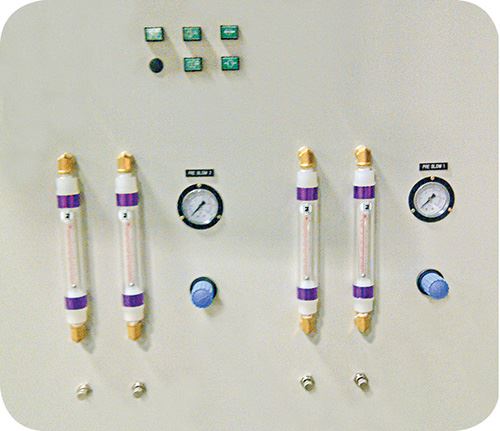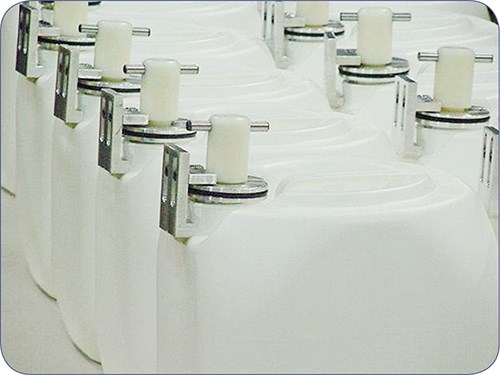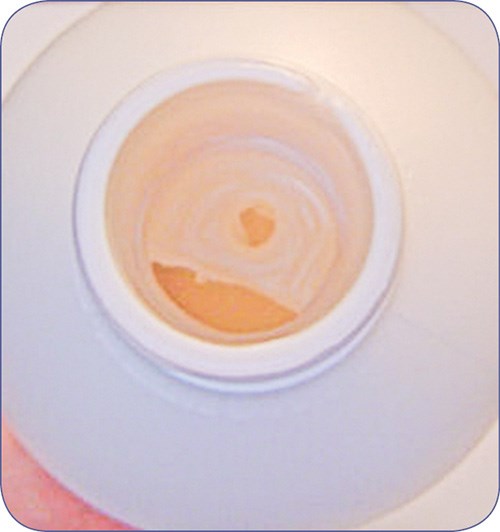Soothing a Temperamental Process To Make Better Bottles
Careful choices of machines, tools and operators are critical to tame the process to produce high-quality bottles consistently.
Extrusion blow molding (EBM) is an extraordinarily adaptable process. It is used to make 10-oz juice bottles in as many as 72 cavities on a wheel machine or up to 20 cavities on a shuttle machine, and drums as large as 55 gal in large industrial machines.
Each machine and mold type has its own set of challenges, and this article singles out typical issues related to bottles for packaging. In terms of number of installed machines (though not necessarily in number of bottles produced) shuttle-type machines are typically the equipment of choice in this market, so the troubleshooting tips given here will apply mostly to those.
THE NECK CHALLENGE
Necks are undoubtedly the single largest culprit in bottle quality problems. They are formed by the interaction of molten plastic (the parison), two mold halves, and a blow pin. The extruded parison is captured between the mold halves, the parison is cut, and the blow pin enters the parison, cuts the neck’s outer edge between a cutting sleeve and an angled striker plate, and cools it down to a demolding temperature.
If the parison is not completely open when the blow pin enters, some of the material may be pushed into the bottle neck and obstruct the opening, creating a headache later on the filling line. So proper cutting is crucial to avoid this problem.
There are a number of knife options whose selection is based on parison thickness, bottle shape, and cavitation. In all cases, the right parison thickness and the amount of head-support air are critical. Parison thickness is controlled by the wall-thickness controller, often called a parison programmer, which allows variation of the gap through which the parison exits the extrusion head.
In many applications it is a good idea to increase parison thickness just beneath the cutting area to allow the cut parison to stand up better rather than folding over. Head-support air is a fine air stream that flows inside the parison, and modern machines allow constant as well as time-controlled support air with different flow controls. This makes it possible to use constant support air for the bottom part of the container to eliminate collapsing of the parison, and to adjust the time-controlled component to add just enough air so the parison will open up during cutting. Air can become trapped underneath the cutting sleeve of the blow pin and may need to be vented, especially for wider neck lands.
Neck integrity has a lot to do with mold construction, particularly the way in which water is routed in the neck insert, which is usually a separate component. While EBM molds are typically made from aircraft-quality aluminum, such as 6061 or 7075, neck and bottom inserts are generally constructed from beryllium-copper. This material is stronger and can withstand cutting of the parison in the mold longer than aluminum.
There are several ways to bring cooling water to the bottle neck, which usually has a thicker wall than the rest of the bottle. The best way is to drive water around in a semi-circle, a design called “horseshoe” neck cooling. In this configuration, water is evenly and closely traveling around the neck, optimizing cooling performance.
Keep in mind, though, that the area close to the parting line cannot be cooled as efficiently as the rest of the neck. With round neck inserts, this results in the walls at the parting line shrinking more than the ones 90° to it, with the end result being neck ovality. The best countermeasure is not to increase cooling time—which also increases cycle time as a result—but rather to ovalize the neck inserts by cutting them larger in the parting line. This should be undertaken once the mold has run for the first time in order to get accurate figures.
During this trial run operators should pay no attention to neck ovality; instead, they should focus on running the mold as fast as possible, taking all other parameters such as the bottle base into account. This will ensure that the mold is run optimally.
WATCH THOSE BLOW PINS
Blow pin integrity and cooling are paramount for producing high-quality necks. Bent or misaligned blow pins with poor water circulation and dull cutting sleeves are responsible for such defects as saddle finishes, bent or uneven necks, and burrs. All blow pins should be water-cooled; blow pins for neck finishes over 1.5 mm neck land should have water cooling all the way to the tips. It is more difficult to change the tips when they are water-cooled but well worth the effort for the thicker necks.
Your typical customer today—the brand owner—is much more sophisticated than it used to be just 10 years ago, often demanding statistical analysis of bottle parameters with process capability values (so-called Cpk values) in the 1.2 to 1.33 range. This requirement poses challenges to multi-cavity production.
Nowadays, machines are equipped with a wall-thickness controller or parison programmer, as noted above. This programmer may use 20 to 400 points to control parison thickness during extrusion. Material can be distributed more uniformly to various container sections that require different amounts of material.
Bottle shoulders, for example, always need less material than bottle bodies, and this can be easily accomplished by the programmer. For the programmer to work properly, it is very important that the length of the parison be always the same, and that all parisons in a multi-cavity setup have the same length. This is true because the programmed thin and thick spots must end up precisely in the container sections they are destined for, and varying parison length will move these spots up or down.
Many operators give up too early in adjusting parison length when it comes to multi-cavity systems. To get all four, eight, or 12 parisons extruding out of a head to the same length requires skill and patience. Small mechanical adjustments are necessary, and each requires stopping the machine, which operators are reluctant to do, since it takes away from production time. In the case of very short production runs, it may not be feasible to spend too much time on parison length, but these steps should be considered a must for every run more than a week long.
MONITOR THE REGRIND
To ensure consistent parison length, virgin plastic, regrind, and possibly any additives such as color should be fed via a gravimetric feeding system that weighs each lot of material before dispensing. Many bottle molders use these systems, but unfortunately many of them are not calibrated properly and are therefore not delivering consistent batch amounts. This is often because material handlers are not aware of the importance of proper calibration or are not trained to perform this operation.
Another complication arises from the fact that regrind levels are typically not consistent. During startup, and when adjustments become necessary during a production run, off-spec bottles are typically thrown onto the flash conveyor and ground up. This increases the amount of regrind, and fills bins up rapidly. Material handlers who have not been otherwise instructed routinely respond to this by dramatically increasing the regrind percentage on the material feeding systems to work off the excess regrind.
However, regrind processes differently than virgin material, and the result of increased regrind percentages is in most cases longer and wider parisons. The longer parisons change the positions of important program points and the result can be off-spec containers. Savvy operators are well aware of this fact and program their parisons accordingly by stretching thick parison sections over more points of the program than necessary. This way, they will still make a sellable part even with a different parison length. However, this adjustment may not be optimal for the overall container and it is a good idea to train material handlers to address the challenge.
There are additional options and challenges with oblong-shaped bottles. Either the pin or die of the extrusion (head) tooling may be ovalized (usually the die). This may be necessary to add strength to corners, or to avoid thick ribs across the panel area of a flat oval container. This is usually accomplished by scalloping out parts of the die in some specified fashion to allow plastic to flow into these areas, which will then add material where it is needed in the container.
It is extremely beneficial for bottle molders to have this capability in-house rather than buying ovalized tooling from outside. That way, more often than not, small adjustments can be made after an initial run. Many processors hesitate to send tools out for rework because of the ensuing production delays. As a result, insufficiently ovalized tools lead to weight settings higher than would be necessary had personnel gone the extra mile. In many cases brand owners add a minimum wall thickness to their specifications.
The thinnest part of a bottle is the bottom corner. Insufficiently ovalizing the tool means that the entire bottom area of the container must be made thicker. This leads to thick spots in other areas that must be compensated with longer cycle times.
Another area of annoying defects can come from the size of the head tooling itself. There are two ways of sizing the tooling:
1) Making the parison just wide enough so it will fit into the neck opening. This will leave no burrs on the container shoulder.
2) Having the parison larger than the neck opening. This reduces the distance the parison has to stretch to the bottle corners, resulting in better wall thickness there.
While the size of the die is most important to determine parison diameter, other factors play a role as well. Higher screw rpm, colder die temperature, increased regrind percentage, more head-support air, and larger head components all lead to larger parisons and vice versa.
When the parison becomes too small, the corner wall thickness suffers or handles are not adequately formed (so-called webbing occurs). When the parison gets too big, flash at the neck or body areas might result. It is therefore up to the processor to keep the balance of all parameters just right.
Far too often though, head tooling is made a little too big or too small and processors have to interfere constantly in the process to make up for the shortcomings that are thus created. The resulting loss of productivity and quality problems may cost dearly and should encourage proper head tooling selection.
EBM is a temperamental process. The parison is extruded into the ever-changing plant environment and is therefore not as stable as components of other plastics processes. Careful choices of machines, tools and operators are critical to tame the process to produce high-quality bottles consistently.
Related Content
Brewer Chooses Quick-Change Flexibility to Blow Wide Range of PET Beer Bottles
Beermaster Brewery found a “universal” stretch-blow machine from PET Technologies enables multiple changes per day among four sizes of beer bottles.
Read MoreLighter, Higher Performance Base Design for Premium rPET Bottles
Sidel’s StarLITE-R Premium base for thicker rPET bottles ensures bottle stability in high-speed production, while saving energy.
Read MoreFor Extrusion and Injection-Blow Molders, Numerous Upgrades in Machines and Services
Uniloy is revising its machinery lines across the board and strengthening after-sales services in tooling maintenance, spare parts and tech service.
Read MoreEnd-to-End Quality Management For Aseptic PET Beverage Bottling
Sidel introduces Qual-IS comprehensive quality system to merge all QC activities in PET aseptic beverage bottling, from the preform blowing to laboratory management.
Read MoreRead Next
For PLASTICS' CEO Seaholm, NPE to Shine Light on Sustainability Successes
With advocacy, communication and sustainability as three main pillars, Seaholm leads a trade association to NPE that ‘is more active today than we have ever been.’
Read MoreLead the Conversation, Change the Conversation
Coverage of single-use plastics can be both misleading and demoralizing. Here are 10 tips for changing the perception of the plastics industry at your company and in your community.
Read MoreMaking the Circular Economy a Reality
Driven by brand owner demands and new worldwide legislation, the entire supply chain is working toward the shift to circularity, with some evidence the circular economy has already begun.
Read More

















